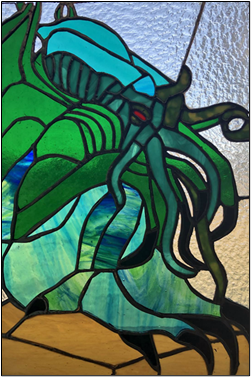Coffin Births, Eclipse Babies, and Test-tube Wombs: Unnatural Birth in the World of A. Sapkowski’s Witcher Series
Event Website
Start Date
2-5-2022 11:00 AM
Description
In our Primary World, “unnatural” conception and birth give rise to monsters, according to myriad mythological traditions, including the Polish strzyga and the Indian tradition of “eclipse babies.” More modern versions can be found in the Frankenstein tradition, in which the male scientist perverts the natural process of procreation, with monstrous results. Andrzej Sapkowski’s Witcher series of fantasy novels and short stories adapts and reenvisions both deep-rooted ethnic superstitions and cautionary tales against the over-reach of the “masculine” and “paternalistic” view of science prevalent since the Scientific Revolution that, as described by ecofeminist historian of science Carolyn Merchant, has led to the “‘rape’ of nature for human good.” In Sapkowski’s tales, the “eclipse girl” Renfri becomes monstrous not due to the unearthly circumstances of her birth, but the actions of her stepmother and the mad scientist Stregobar, while the princess Adda is born a strzyga as a result of a curse placed upon her mother by a spurned male suitor rather than her incestuous conception. While the sorceress Yennefer turns to folk medicine and forbidden magic in a vain attempt to cure her infertility, myriad male characters routinely engage in magic-enhanced genetic engineering to give birth to monsters and cause children to be “reborn” as monster-hunting mutants—the Witchers themselves. This paper examines specific examples of monstrous masculine-mediated birth (and attempts at birth) in the Witcher-verse, situating this Secondary World as both what Carl Malmgren terms a “science-fantasy world” and a Tolkienian faërian subcreation.
Creative Commons License

This work is licensed under a Creative Commons Attribution-NonCommercial-No Derivative Works 4.0 International License.
Coffin Births, Eclipse Babies, and Test-tube Wombs: Unnatural Birth in the World of A. Sapkowski’s Witcher Series
In our Primary World, “unnatural” conception and birth give rise to monsters, according to myriad mythological traditions, including the Polish strzyga and the Indian tradition of “eclipse babies.” More modern versions can be found in the Frankenstein tradition, in which the male scientist perverts the natural process of procreation, with monstrous results. Andrzej Sapkowski’s Witcher series of fantasy novels and short stories adapts and reenvisions both deep-rooted ethnic superstitions and cautionary tales against the over-reach of the “masculine” and “paternalistic” view of science prevalent since the Scientific Revolution that, as described by ecofeminist historian of science Carolyn Merchant, has led to the “‘rape’ of nature for human good.” In Sapkowski’s tales, the “eclipse girl” Renfri becomes monstrous not due to the unearthly circumstances of her birth, but the actions of her stepmother and the mad scientist Stregobar, while the princess Adda is born a strzyga as a result of a curse placed upon her mother by a spurned male suitor rather than her incestuous conception. While the sorceress Yennefer turns to folk medicine and forbidden magic in a vain attempt to cure her infertility, myriad male characters routinely engage in magic-enhanced genetic engineering to give birth to monsters and cause children to be “reborn” as monster-hunting mutants—the Witchers themselves. This paper examines specific examples of monstrous masculine-mediated birth (and attempts at birth) in the Witcher-verse, situating this Secondary World as both what Carl Malmgren terms a “science-fantasy world” and a Tolkienian faërian subcreation.



Comments
Host: Nolan Meditz
Tech Mod: Leslie Donovan